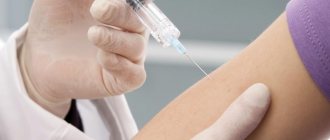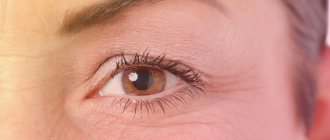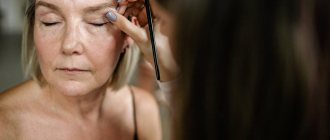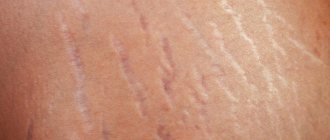What it is?
Ptosis is a general term that means drooping of an organ or part of the body. The eyebrows, corners of the lips, eyelids, chest, kidneys, etc. can move downwards. Depending on the cause of the drooping, the following can be distinguished:
- ptosis as a consequence of injury, disease or as a congenital pathology;
- gravitational ptosis caused by the aging process and the force of gravity.
The fundamental difference is that in the first case we are talking about a kind of disease that is not very common, and in the second it is about a natural and inevitable phenomenon to which everyone without exception is susceptible. Thus, the word “ptosis” usually means gravitational ptosis or, simply put, sagging skin.
Unusual sensations
It happens that a person can feel phenomena in the face and head that are unusual for the usual state. They are called paresthesias and are manifested by the following symptoms:
- tingling;
- burning;
- "goosebumps"
- numbness;
- itching and rashes.
Often facial paresthesias have an organic basis and become a sign of the disease:
- neuritis, neuralgia of the cranial nerves;
- multiple sclerosis;
- stroke and other circulatory disorders in the brain;
- shingles;
- migraine;
- diabetes;
- epilepsy;
- hypertension.
In certain cases, unusual sensations are observed in certain parts of the face. For example, similar manifestations in the language may appear for the reasons listed above, but often have a different etiology. They are provoked by cancer of the tongue and larynx, as well as trauma by a splintered tooth or denture.
Dental procedures cause numbness and other unusual feelings, especially after tooth extraction. Another reason for their appearance may be an uncomfortable position during sleep or an unsuitable pillow. But the sensations caused by such phenomena usually pass soon.
Another group of provoking factors consists of psychogenic and neurogenic disorders.
How and why?
Of course, not only age-related changes lead to the body becoming flabby and its contours blurring. Common causes of ptosis are:
- sudden weight loss;
- pregnancy and breastfeeding;
- minimal physical activity;
- hormonal imbalances.
In all cases, the mechanism of development of ptosis is approximately the same. Elastin and collagen fibers, which are located under the top layer of skin, stretch, become thinner and can no longer play the role of reinforcing material. And if the muscles also weaken, this aggravates the situation. Under the influence of gravity, the skin sags, forming unsightly folds and furrows.
Disorders of facial innervation
A neurotic face may develop due to damage to the nerves that innervate it. Most often these are the trigeminal and facial nerves.
The trigeminal nerve is the 5th pair of cranial nerves. It is the largest of all 12 pairs of these nerve fibers.
N. trigeminus arises symmetrically on both sides of the face and consists of 3 large branches: the ophthalmic, maxillary and mandibular nerves. These three large processes innervate a fairly large area:
- skin of the forehead and temples;
- mucous membrane of the oral and nasal cavities, sinuses;
- tongue, teeth, conjunctiva;
- muscles - chewing, floor of the mouth, palatine, tympanic membrane.
Accordingly, when it is damaged, pathological sensations arise in these elements.
Facial nerve – 7th pair of cranial nerves. Its branches surround the temporal and ocular region, the zygomatic arch, and descend to and behind the lower jaw. They innervate all facial muscles: auricular, orbicularis and zygomatic, chewing, upper lip and corners of the mouth, cheek. As well as the muscles of the lower lip and chin, around the mouth, the muscles of the nose and laughter, and the neck.
N. facialis is also paired, and is located on both sides of the face.
In 94% of cases, the damage to these nerve fibers is unilateral, and only 6% is a bilateral process.
Disruption of innervation can also be primary or secondary.
Primary is the lesion that initially involves the nerve. This could be hypothermia or strangulation.
Secondary damage develops as a consequence of other diseases.
Another reason for the development of facial neurosis is neurogenic and mental disorders. When unpleasant sensations in the face and head occur against the background of psycho-emotional arousal, shock, or as a result of stressful situations.
The most problematic places
Ptosis can affect almost any part of your body, but the most vulnerable are the eyelids, face, chest, neck, and inner surface of the forearms. These are precisely the zones that most eloquently indicate a person’s age and shape his appearance. Therefore, the doctor at our clinic uses many techniques that can stop premature aging and sagging skin. These techniques can be either invasive or non-invasive.
Our specialist looks at which area requires correction and how serious the problem is, and then chooses the appropriate technique. In some cases, to eliminate a defect it is necessary to perform a set of various procedures. Let's look at the most popular options.
Prevention
The aging process cannot be stopped, but the manifestations of gravitational ptosis can be postponed to a later date. To do this, you need to start taking care of your skin and facial muscles at a young age.
Preventive measures will help:
- Proper nutrition: include as many vegetables and fruits in the menu as possible. Porridge, nuts, and whole grain bread have a beneficial effect on muscle tone. Reduce consumption of salt, sugar, and avoid fast food products.
- Daily physical activity, walking.
- Regulate water consumption. The skin needs 2 liters of fluid daily. It is useful to drink the first glass of water immediately after waking up.
- Do facial massage and gymnastics daily. Nourish your skin with masks once a week.
- It is useful to rub your face along the massage lines with ice cubes.
After 30 years, the body begins to urgently need to replenish its reserves of vitamins. You can purchase special complexes that include 6 essential vitamins:
- E (tocopherol) - antioxidant, inhibits the aging process, increases the amount of estrogen;
- C - strengthens the immune system;
- A - is responsible for the condition of the skin; a lack of vitamin leads to peeling of the dermis, the formation of cracks, and sagging;
- group B - ensures normal functioning of the nervous system, affects the condition of hair and eyelids;
- H - accelerates the production of elastin, participates in metabolic processes;
- D - “sun vitamin”, is involved in cell renewal, promotes the absorption of magnesium and calcium.
Minerals will help slow down biological aging. They regulate the water-salt balance in the body, participate in hematopoiesis, and are responsible for the condition of muscle tissue. Minerals are not synthesized in the body.
It is necessary to include in your diet foods containing vital macroelements:
- potassium: fresh fruits, dried apricots, liver, greens;
- sodium: cheese, sea fish, beets, garlic;
- calcium: cottage cheese, vegetables, honey, fish;
- magnesium: legumes, cucumbers, buckwheat, dried fruits.
Upper eyelid ptosis
It all starts with the appearance of folds on the eyelids, which are visible only when the eyes are open. Later, these folds become more pronounced and descend lower to the eyelashes. As a result, the “excess” skin of the eyelids begins to hang over the eyes, visually narrowing them.
You can solve this problem surgically - the most effective, reliable and safe way. The operation involves removing a section of the skin of the eyelid, due to which the folds appear to be smoothed out (upper eyelid surgery). Nowadays, eyelid lift is becoming an increasingly popular rejuvenation procedure.
Preventive measures
To prevent the development of premature ptosis, try to avoid:
- Stressful situations. Maintaining calm can be difficult. To do this, try to master relaxation techniques that allow you to relieve tension, including from the muscles of your face. Do not forget that static tension is a powerful provocateur of the appearance of folds, wrinkles and imbalance in the functioning of the muscles responsible for facial expressions.
- Systematic lack of sleep. , a person should sleep from 23:00 to 4:00. If you do not adhere to this routine, then geriatric processes are accelerated, which clearly worsens the condition of the skin. On average, a person should sleep 7-8 hours.
- Poor nutrition. When consuming large amounts of fast carbohydrates, collagen fibers stick together. As a result, the skin loses its elasticity. The skin also suffers if the menu contains an abundance of trans fats and processed foods, but there are no fruits, vegetables, or fatty acids.
- Unhealthy habits. Smoking, drinking alcohol or using drugs for non-medical purposes negatively affects the vascular system and triggers the production of free radicals.
- Lack of movement. Cardio exercises help disperse lymph and blood, and also increase blood oxygenation. It is enough to walk at a pace of about 30 minutes a day. And physical inactivity not only worsens the condition of the skin of the face, but also negatively affects the general condition of the body.
- Dehydration. If you drink little (less than 1.5 liters per day) of pure water, this leads to stagnation and disrupts the overall metabolism. The skin is one of the first to suffer. You can read more about dehydration.
Especially at the first stage of ptosis, a combination of preventive care and basic cosmetic procedures has proven itself well.
Facial ptosis
Patients most often come to us with facial skin ptosis. Time and gravity inexorably distort features, resulting in wrinkles, tear furrows, dark circles or bags under the eyes, “bulldog” cheeks and other changes. The face itself seems to blur, losing its original shape.
The possibilities of modern cosmetology and plastic surgery are so wide that they can successfully combat the manifestations of ptosis. The specialists of our clinic have extensive experience in this fight and carry it out in several directions:
1. Injections . The essence of the method is that the substance used for correction is injected under the skin using an injection. These substances can be different and, accordingly, give different effects. So, our doctor conducts:
- a course of injections to smooth out wrinkles and folds (Botox);
- injections of drugs based on hyaluronic acid to synthesize collagen and increase skin elasticity (contouring);
- injection of the patient's own adipose tissue under the skin to replenish volume (lipofilling).
2. Thread lifting . This technique allows you to tighten sagging skin using special threads that are fixed in the subcutaneous tissue. In essence, they perform the function of reinforcement, preserving the contours of the face and preventing the formation of folds. The threads can be absorbable or non-absorbable, smooth or notched, etc. The doctor implants them under the skin through tiny punctures using a special needle or cannula.
3. Hardware procedures . Currently, this is perhaps the most gentle and effective way to rejuvenate facial skin. The impact can be provided using radio waves, laser, microcurrent, ultrasound, etc. In our clinic you can use the following procedures:
- fractional photothermolysis;
- RF lifting;
- laser resurfacing.
4. Plastic surgery . In case of significant sagging skin and in cases where other methods are ineffective, our specialists can offer a radical approach - the help of a surgeon.
Causes of sagging skin
Until the age of 25-30, the body actively produces elastin, collagen and hyaluronic acid. These are the 3 main components of the frame, which maintains the tone of all layers of the epidermis. With age, their natural concentration becomes lower, which causes oval deformation and other changes. Speeds up the process:
- insufficient hydration;
- violation of the drinking regime;
- too frequent consumption of foods with a diuretic effect;
- lack of protection from sunlight and other external factors;
- binge eating;
- sudden weight loss;
- bad habits.
All these factors accelerate the loss of clear lines and provoke sagging skin. The type of gravitational aging of the face is also influenced by hereditary predisposition. Competent care using anti-aging cosmetics will help keep your skin toned and stop the development of age-related changes. In this regard, the most effective are Japanese and Korean lines, where the power of natural ingredients is combined with modern production methods.
Breast ptosis
Even the most luxurious and firm bust loses its attractiveness over time. Pregnancy and subsequent breastfeeding become a particularly difficult test for him. The mammary glands lose their volume, stretch and droop. You can correct this in our clinic with a surgeon who will perform breast lift surgery (mastopexy). Some of the stretched skin is simply removed, and the bust again becomes neat and elastic. If you wish, a breast lift will be combined with the installation of implants.
Real life examples
Some famous people, whose fame sometimes trumpets all over the world, were also hostage to the pathology of the facial nerve.
Sylvester Stallone, who is known for his enchanting roles, was injured at birth. The actor's mother had a difficult birth and he had to be pulled with forceps. The result is damage to the vocal cords and paresis of the left side of the face. Because of this, Stallone had problems with speech, which became a reason for ridicule from his peers.
The actor grew up as a difficult child. But, in spite of everything, he managed to overcome his defect and achieve considerable success, although partial immobility of his face remained.
Domestic showman Dmitry Nagiyev received facial asymmetry, which was nicknamed “Nagiyev’s squint”, due to paresis of the facial nerve. The illness happened unexpectedly. As a theater student, one day he felt that his face was not moving.
He spent 1.5 months in the hospital to no avail. But one day in his room a window broke due to a draft. Fright provoked a partial return of mobility and sensitivity of the facial part, but the left part retained its immobility.
Hand ptosis
The inner surface of the forearms is a problem area for many people. The skin gradually stretches and begins to sag, forming unaesthetic flabby “wings”. And if there is also excess adipose tissue, the hands are simply disfigured.
A plastic surgeon successfully performs an operation in which an incision is made from the armpit to the elbow, excess skin and fat are removed, after which the tissue is pulled up to the muscles and a suture is placed (brachioplasty). Gravitational ptosis is an inevitable phenomenon. But modern methods and the professionalism of specialists make it possible to outwit nature and win back a few more years of youth and beauty from time.
Neuroses
This is a large group of diseases, manifested primarily in psycho-emotional disorders, as well as malfunctions of the autonomic nervous system. They do not cause pathological disorders of the nervous tissue, but have a significant impact on the human psyche.
There are several types of disorders in which the symptoms are visible.
Muscular neurosis is manifested by muscle tension, spasm and convulsive twitching. Neurosis of the facial muscles makes itself felt with the following manifestations:
- nervous tic;
- lip tension, clenching;
- convulsive contraction, the face seemed to move;
- tingling, burning sensation;
- muscle pain;
- Tension of the neck muscles is manifested by a feeling of lack of air, a lump in the throat.
When we find ourselves in a stressful situation, our body produces stress hormones. They, among many other reactions, cause muscle tension. Now imagine, if we are exposed to chronic stress, what happens to our muscles, and specifically to the muscles of the face. Being systematically in hypertonicity, they overexert themselves. This is what causes their nervous twitching, spasms, and convulsions.
Another type of neurosis is skin. It causes paresthesias in the facial skin of the following type:
- severe itching, burning in the facial and scalp without clear localization;
- sensation as if something were touching the face. And it's terribly annoying;
- the appearance of red spots on the face and neck. Possible rash.
The causes of such phenomena are nervous and mental overstrain, chronic stress, sleep disturbances, as well as disruptions in hormonal regulation.
With neuroses associated with disruption of the autonomic nervous system, various manifestations may also occur. Malfunctions in the functioning of the vascular network occur, and a vascular neurotic disorder develops.
Vascular neurosis of the face is manifested by flaking and dryness, a feeling of tightness of the skin. She becomes pale, sometimes cyanotic, and her sensitivity worsens. In addition, sneezing appears, the nose is stuffy, the eyes become red and watery, the skin itches and itches. This indicates the development of vegetative-allergic reactions.










